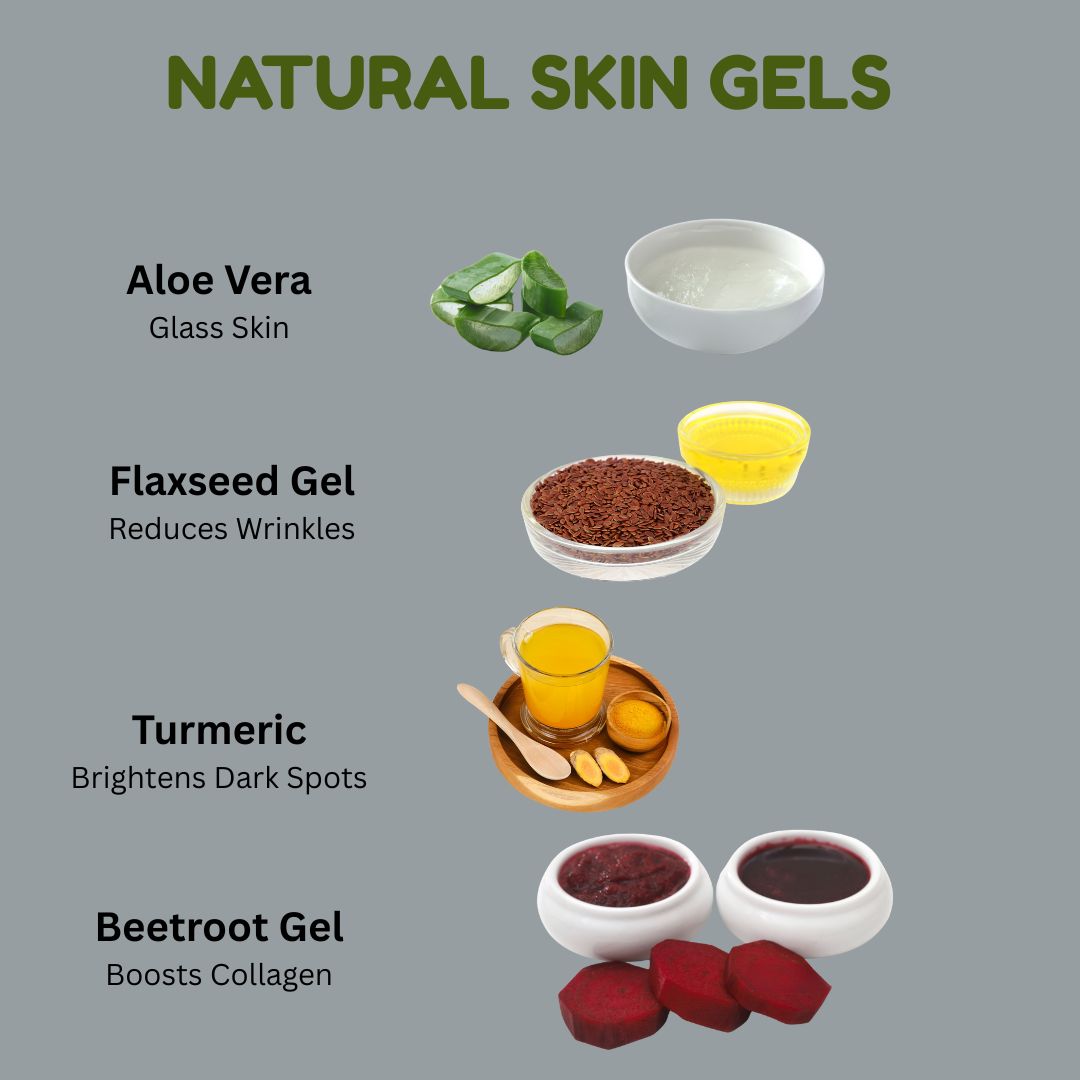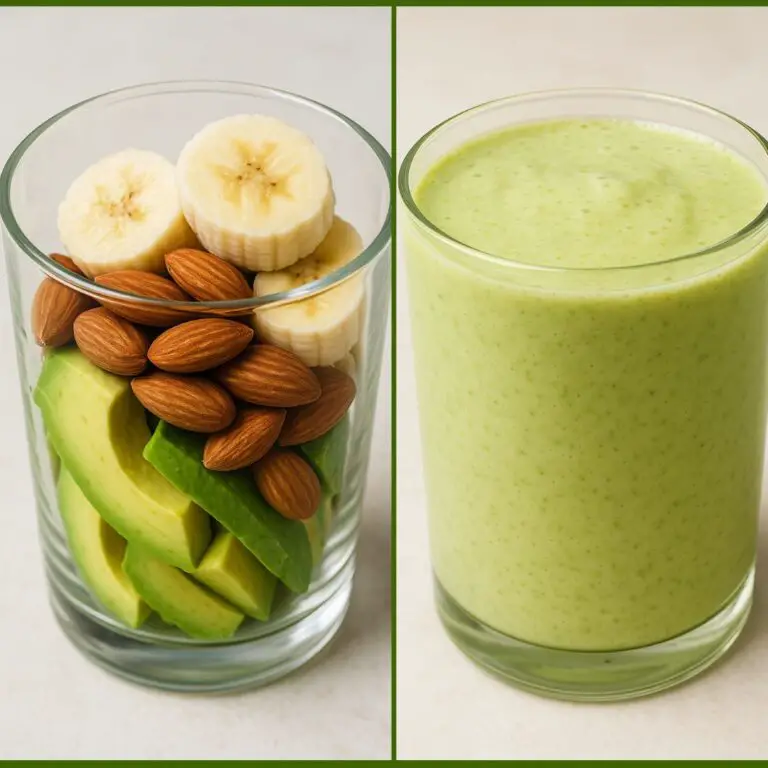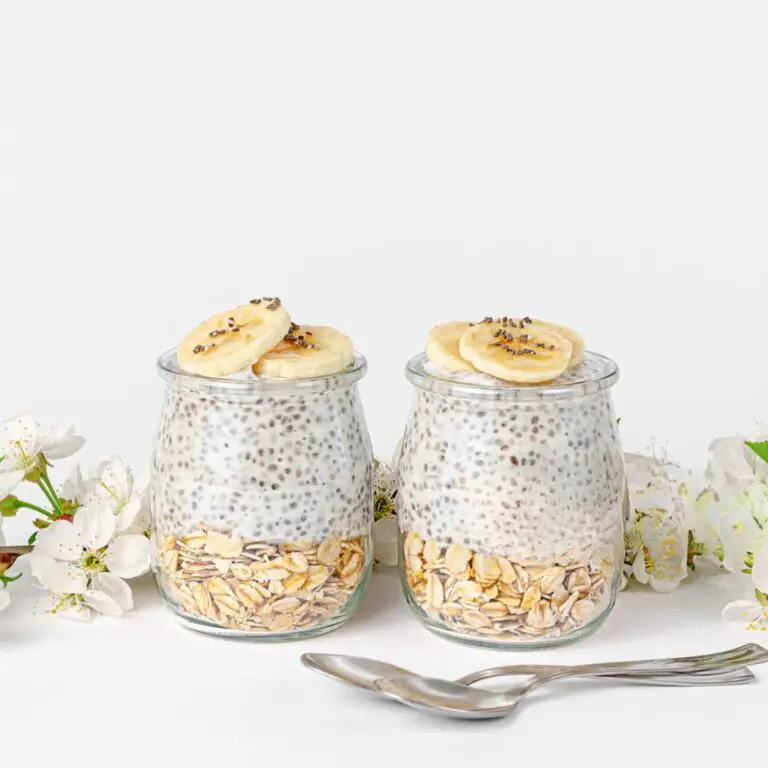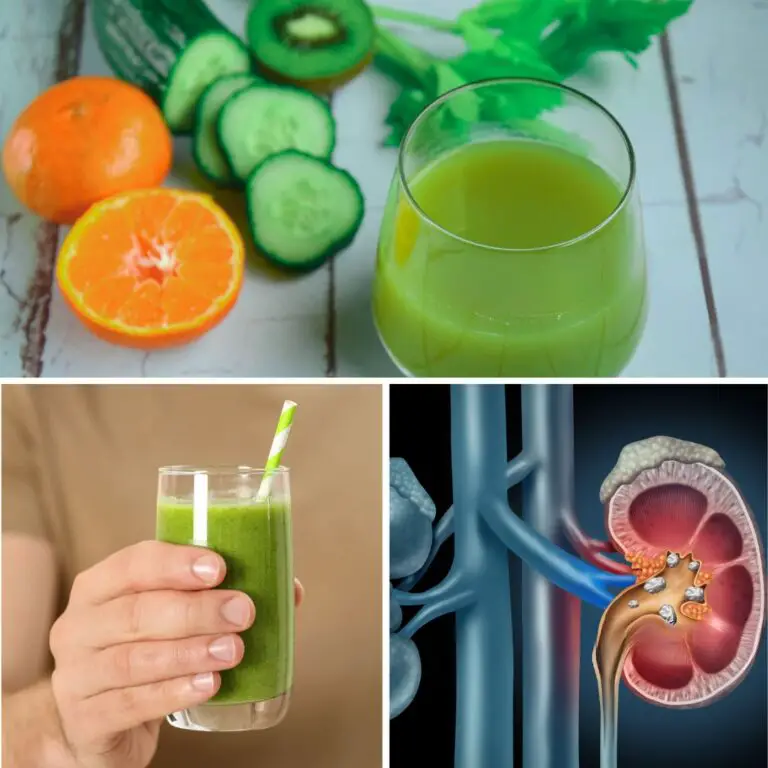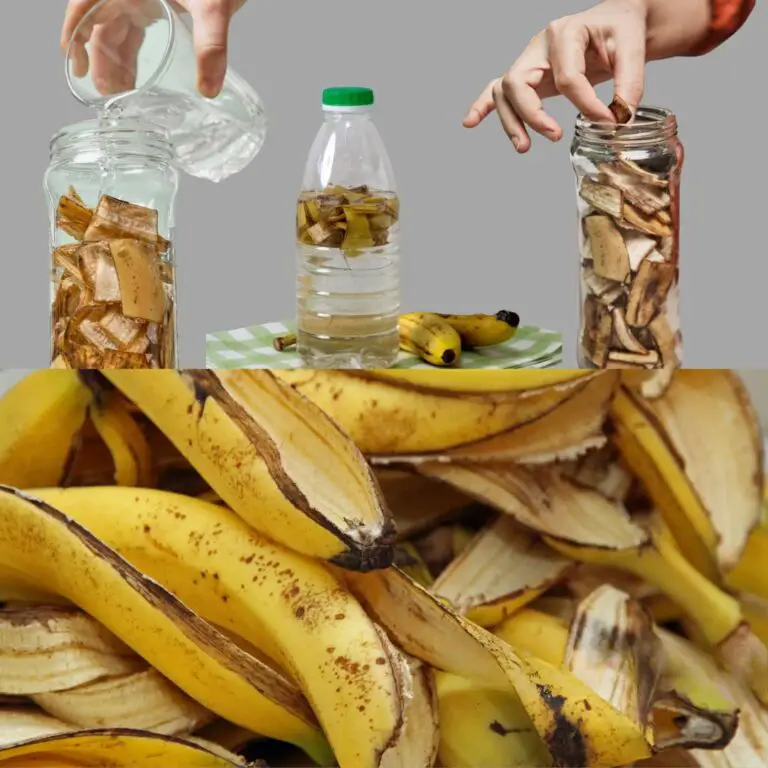4 Natural Gels = 4 Skin Miracles!
Introduction: Discover the Power of Nature’s Skin Elixirs
In the quest for glowing, healthy skin, nature offers some of the most potent and effective solutions—often found right in your kitchen or garden. Among these, natural gels stand out as skin care miracles. These lightweight, soothing, and nourishing gels penetrate deeply to hydrate, heal, and rejuvenate your skin without any harsh chemicals or synthetic additives.
Imagine tapping into the goodness of four remarkable natural gels, each packed with vitamins, antioxidants, and healing properties that can transform your skin in different ways. From calming inflammation and reducing redness to boosting hydration and even fighting acne, these gels are skincare game changers.
In this guide, you’ll learn how to prepare and use these four natural gels at home with simple ingredients and easy steps. Embrace this holistic, cost-effective approach to radiant skin and enjoy the miracles nature has to offer!
Why You’ll Love These Natural Gels: Pure, Potent, and Personalized
There’s something truly special about natural gels—their gentle yet powerful effects make them suitable for all skin types, including sensitive skin. Unlike many commercial products loaded with preservatives and chemicals, these gels provide clean, nourishing skincare that’s kind to both your skin and the environment.
What makes these gels uniquely appealing is their multi-functionality. For instance, aloe vera gel hydrates and soothes sunburn, while flaxseed gel offers anti-aging benefits. Each gel addresses different skin concerns, giving you a well-rounded skincare toolkit to customize your routine.
Plus, making your own gels allows you to skip the unnecessary fillers, tailor them with your favorite essential oils, and use them fresh for maximum effectiveness.
Ingredients: What You’ll Need for These 4 Natural Gels
Here are the main ingredients for each of the four natural gels we’ll explore:
- Aloe Vera Gel
- Fresh aloe vera leaves or 100% pure aloe vera gel (store-bought)
- Flaxseed Gel
- Whole flaxseeds
- Water
- Chia Seed Gel
- Chia seeds
- Water
- Cucumber Gel
- Fresh cucumber
- Aloe vera gel (optional for added moisture)
Optional add-ins for customization:
- Essential oils (lavender, tea tree, rose)
- Vitamin E oil
- Rosewater
- Honey (for extra hydration)
Necessary Tools: Simple Gear for Homemade Skincare
Preparing these natural gels requires only a few basic kitchen tools:
- Small saucepan (for heating flaxseeds)
- Fine mesh strainer or cheesecloth (for straining flaxseed gel)
- Blender or food processor (for cucumber gel)
- Glass bowls or jars (for mixing and storage)
- Measuring cups and spoons
- Funnel (optional, for bottling gels)
- Clean spatulas or spoons
These tools are typically found in any kitchen, making the preparation process simple and accessible.
Ingredient Swaps and Additions: Tailoring Your Gels for Maximum Benefit
One of the best things about making your own natural gels is the ability to tweak recipes to suit your skin’s unique needs.
- Aloe Vera Gel: If fresh aloe is unavailable, use 100% pure store-bought gel. Add a few drops of vitamin E oil for enhanced skin repair.
- Flaxseed Gel: Swap whole flaxseeds with flaxseed meal for a quicker gel. Add a teaspoon of honey to boost moisturizing properties.
- Chia Seed Gel: For thicker gel, increase chia seeds to water ratio. Add rosewater for a soothing fragrance and additional skin calming.
- Cucumber Gel: Mix cucumber juice with aloe vera gel or add a few drops of lavender essential oil for a calming effect.
These swaps ensure you can adapt recipes based on what’s available and your personal preferences. If you want to explore more DIY natural skincare alternatives, check out our post on Herbal Skincare Ingredients and How to Use Them.
Step-by-Step Instructions: Making Each of the 4 Natural Gels
1. Aloe Vera Gel
- Cut a fresh aloe vera leaf near the base.
- Wash thoroughly and slice open to scoop out the clear gel with a spoon.
- Blend the gel until smooth for a silky texture.
- Store in an airtight container in the fridge for up to one week.
Tip: Aloe vera gel can be applied directly to skin or mixed with a few drops of essential oils for added benefits.
2. Flaxseed Gel
- Add 1/4 cup of whole flaxseeds to 2 cups of water in a saucepan.
- Bring to a boil, then reduce heat and simmer, stirring frequently until the mixture thickens (about 10-15 minutes).
- Strain the gel using a fine mesh strainer or cheesecloth into a bowl.
- Let cool, then store in a glass jar in the refrigerator for up to two weeks.
Tip: Use the leftover seeds as an addition to your diet or compost.
3. Chia Seed Gel
- Mix 3 tablespoons of chia seeds with 1 cup of water in a bowl.
- Stir and let sit for 20-30 minutes until the mixture turns gel-like and thick.
- Stir again to break up any clumps and store in a jar.
- Refrigerate and use within one week.
Tip: Chia seed gel can be eaten or used topically for hydration and anti-aging effects.
4. Cucumber Gel
- Peel and chop 1 medium cucumber.
- Blend cucumber pieces in a blender until smooth.
- Optional: Strain for smoother gel or mix with 2 tablespoons of aloe vera gel for extra hydration.
- Store in a jar in the refrigerator and use within 4-5 days.
Tip: Cucumber gel refreshes and soothes irritated or sunburned skin.
Pro Tips for Success: Make the Most of Your Natural Gels
- Always use fresh ingredients for best results and to prevent spoilage.
- Sterilize your containers and tools before use to maintain hygiene.
- Store gels in the refrigerator to extend shelf life.
- Patch-test new gels on a small skin area to check for sensitivities.
- Combine gels with natural preservatives like vitamin E oil or grapefruit seed extract for longer storage.
- Use clean hands or a spatula to apply gels to avoid contamination.
For additional skincare storage and safety tips, visit The Environmental Working Group’s guide on cosmetic safety.
Serving Suggestions: How to Use Your Natural Gels Daily
- Aloe vera gel: Use as a daily moisturizer or after-sun soothing treatment.
- Flaxseed gel: Apply as a hydrating face mask or hair styling gel to tame frizz naturally.
- Chia seed gel: Mix with your favorite moisturizer or use as a hydrating primer before makeup.
- Cucumber gel: Use as a refreshing toner or under-eye treatment to reduce puffiness.
Feel free to layer gels with your regular skincare products or blend two gels for customized effects. For example, a cucumber-aloe gel mix is perfect for summer hydration.
Storing and Reheating: Keeping Your Gels Fresh and Effective
- Store all gels in clean, airtight glass containers in the refrigerator.
- Avoid storing gels near heat or sunlight, which degrade nutrients and texture.
- Natural gels do not need reheating; use them cold for the best soothing effect.
- Discard gels that develop off-odors, discoloration, or mold to avoid irritation.
If you want to know more about DIY skincare storage, see Into The Gloss’ expert advice on homemade beauty product storage.
Nutritional Information: Skin-Boosting Nutrients in Your Natural Gels
| Gel Type | Key Nutrients | Skin Benefits |
|---|---|---|
| Aloe Vera Gel | Vitamins A, C, E, minerals, antioxidants | Soothing, anti-inflammatory, hydrating |
| Flaxseed Gel | Omega-3 fatty acids, lignans, antioxidants | Anti-aging, skin elasticity, hydration |
| Chia Seed Gel | Omega-3, fiber, antioxidants, protein | Moisturizing, skin repair, anti-inflammatory |
| Cucumber Gel | Vitamin C, silica, antioxidants | Cooling, anti-inflammatory, skin brightening |
Using these gels regularly boosts your skin’s natural defenses and promotes a youthful, radiant complexion.
FAQs
1. Can I store these natural gels for more than two weeks?
Generally, no. For safety and efficacy, store gels up to two weeks refrigerated and discard if they smell off or change color.
2. Are these gels safe for sensitive skin?
Yes, they are gentle, but always patch-test before full application.
3. Can I use these gels on my hair?
Yes! Flaxseed gel is especially popular as a natural hair styling product.
4. How often should I apply these gels?
Use daily or as needed, especially after sun exposure or to calm irritation.
5. Can I mix these gels with commercial skincare products?
Absolutely! They blend well with moisturizers and serums for added benefits.
For more natural skin care FAQs, check out Dermstore’s Natural Skincare FAQ.
Conclusion: Embrace Nature’s Skin Miracles Today
Unlocking the power of natural gels for skin is a simple yet transformative step towards healthier, glowing skin. Whether you choose aloe vera’s soothing hydration, flaxseed’s anti-aging magic, chia seed’s moisturizing boost, or cucumber’s cooling clarity, each gel brings unique benefits that can enhance your skincare routine naturally and effectively.
By making these gels at home, you not only save money but also gain control over what you put on your skin—free from unnecessary chemicals and preservatives. Plus, the versatility of these gels means you can customize them to fit your skin’s evolving needs, helping you maintain a radiant complexion year-round.
So why wait? Start crafting your own natural gels today and experience the skin miracles nature has lovingly packed into these simple ingredients. Don’t forget to explore our related DIY skincare recipes and trusted expert resources to deepen your journey into natural beauty.
Remember, the best skincare begins with the purest ingredients—sometimes, the most extraordinary solutions are right in your kitchen!

